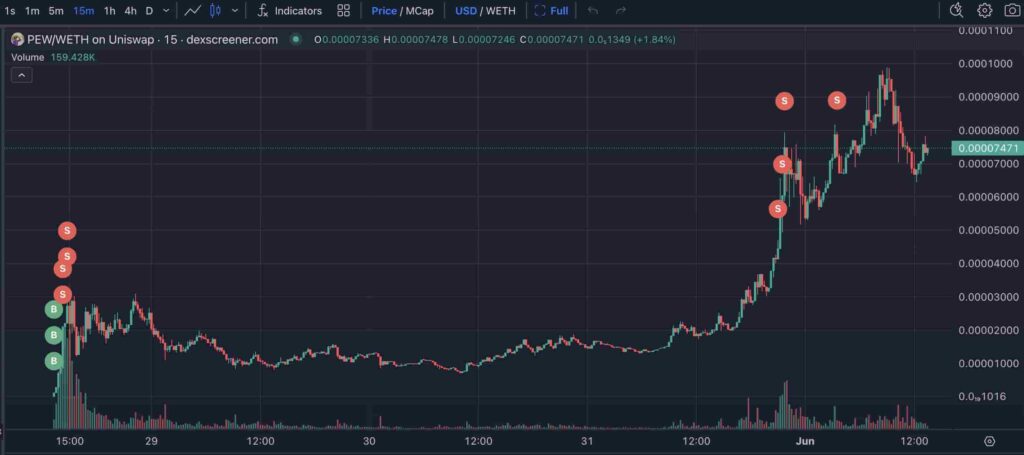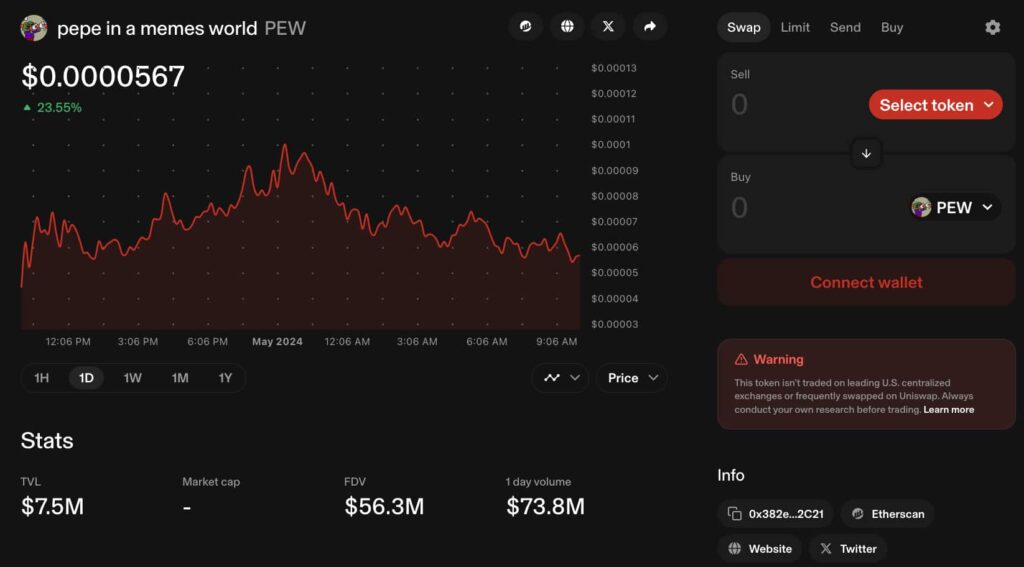Another crypto trader has made waves in the cryptocurrency market with impressive results trading on the decentralized finance (DeFi) ecosystem. The trader made over $1.4 million in unrealized profits with the meme coin PEW on Ethereum (ETH).
As developed, the address starting with ‘0x8EF73‘ bought 27.05 billion PEW with 3.2 ETH, worth $12,300. Lookonchain spotted and reported this crypto trader’s activity on May 31 in a post on X.
Notably, ‘0x8EF73’ already sold 8.05 billion PEW for 83.5 ETH, worth $315,000—over $300,000 in realized profit. As of this writing, the monitored account holds 1 billion PEW worth $61,000.

PEW/WETH on Uniswap. Source: Lookonchain
However, Lookonchain explained that this same trader holds 18 billion more PEW, evenly distributed in 15 other addresses. These holdings are traced back from the first purchase, which happened just three minutes after the meme coin started trading on Uniswap (UNI), Ethereum’s main decentralized exchange (DEX).
The crypto trader holds a $1.42 million stash of this new meme coin four days after the purchase.
The crypto trader may have liquidity issues in realizing the $1.4 million profit
Interestingly, the meme coin that goes by the name “pepe in a memes world” (PEW) has only $7.5 million in total value locked (TVL) on Uniswap. This metric translates into the available liquidity to swap PEW with other ERC-20 tokens on the platform.

“pepe in a memes world” (PEW) on Uniswap. Source: Finbold
Therefore, any attempt to realize larger amounts of this trader’s holdings could directly impact PEW’s price, making profit realization difficult.
Meme coins and the greater fool theory
The risks associated with trading these highly volatile and speculative cryptocurrencies cannot be overstated.
Meme coins, such as PEW, often lack fundamental value, while hype and social media buzz drive their price action. Traders who buy these coins are essentially gambling in the hope that someone else will buy them at a higher price.
This mentality aligns with the “Greater Fool Theory,” which suggests that profits can be made by buying overvalued assets and selling them to a “greater fool.”
However, this theory also highlights the inherent risk of such investments, as the market eventually runs out of willing buyers. When the hype dies down and demand dwindles, traders can remain holding worthless assets, leading to substantial financial losses.
Disclaimer: The content on this site should not be considered investment advice. Investing is speculative. When investing, your capital is at risk.















